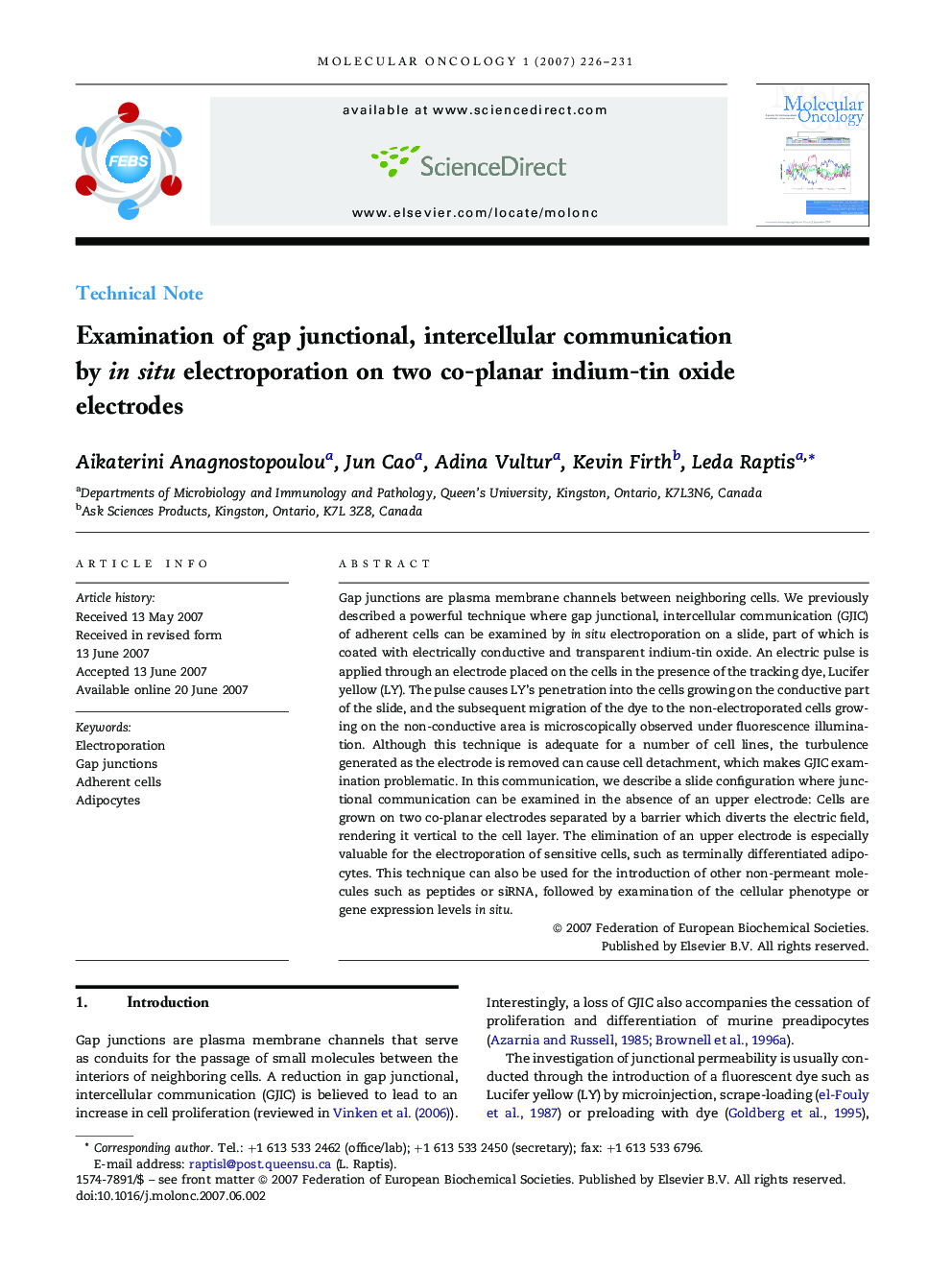| Article ID | Journal | Published Year | Pages | File Type |
|---|---|---|---|---|
| 2145942 | Molecular Oncology | 2007 | 6 Pages |
Gap junctions are plasma membrane channels between neighboring cells. We previously described a powerful technique where gap junctional, intercellular communication (GJIC) of adherent cells can be examined by in situ electroporation on a slide, part of which is coated with electrically conductive and transparent indium-tin oxide. An electric pulse is applied through an electrode placed on the cells in the presence of the tracking dye, Lucifer yellow (LY). The pulse causes LY's penetration into the cells growing on the conductive part of the slide, and the subsequent migration of the dye to the non-electroporated cells growing on the non-conductive area is microscopically observed under fluorescence illumination. Although this technique is adequate for a number of cell lines, the turbulence generated as the electrode is removed can cause cell detachment, which makes GJIC examination problematic. In this communication, we describe a slide configuration where junctional communication can be examined in the absence of an upper electrode: Cells are grown on two co-planar electrodes separated by a barrier which diverts the electric field, rendering it vertical to the cell layer. The elimination of an upper electrode is especially valuable for the electroporation of sensitive cells, such as terminally differentiated adipocytes. This technique can also be used for the introduction of other non-permeant molecules such as peptides or siRNA, followed by examination of the cellular phenotype or gene expression levels in situ.
